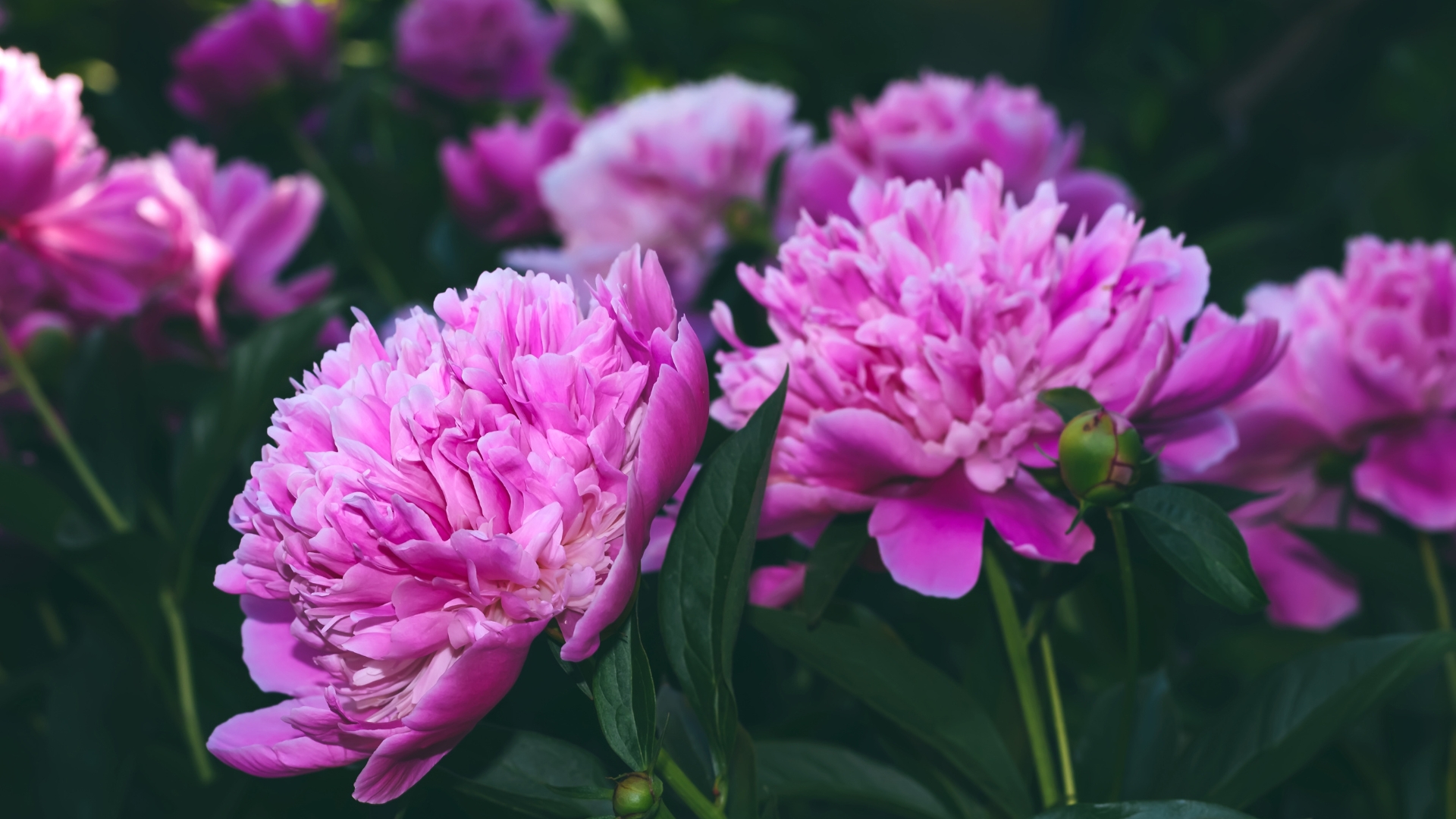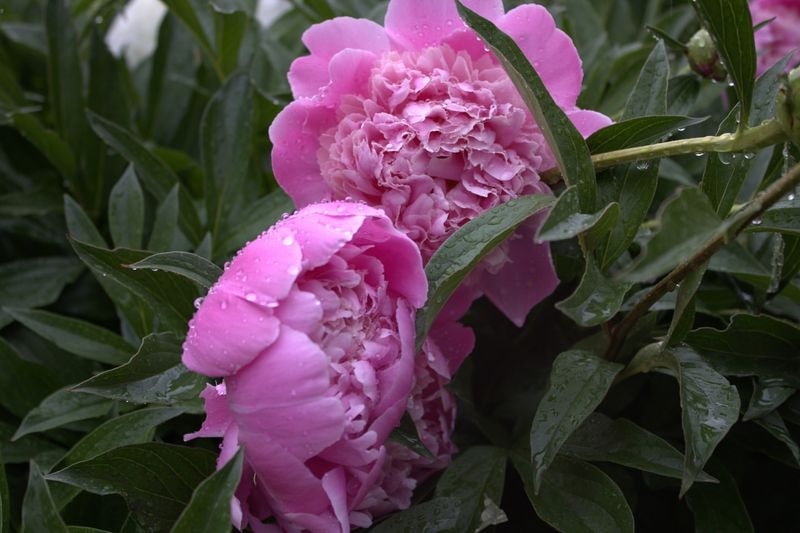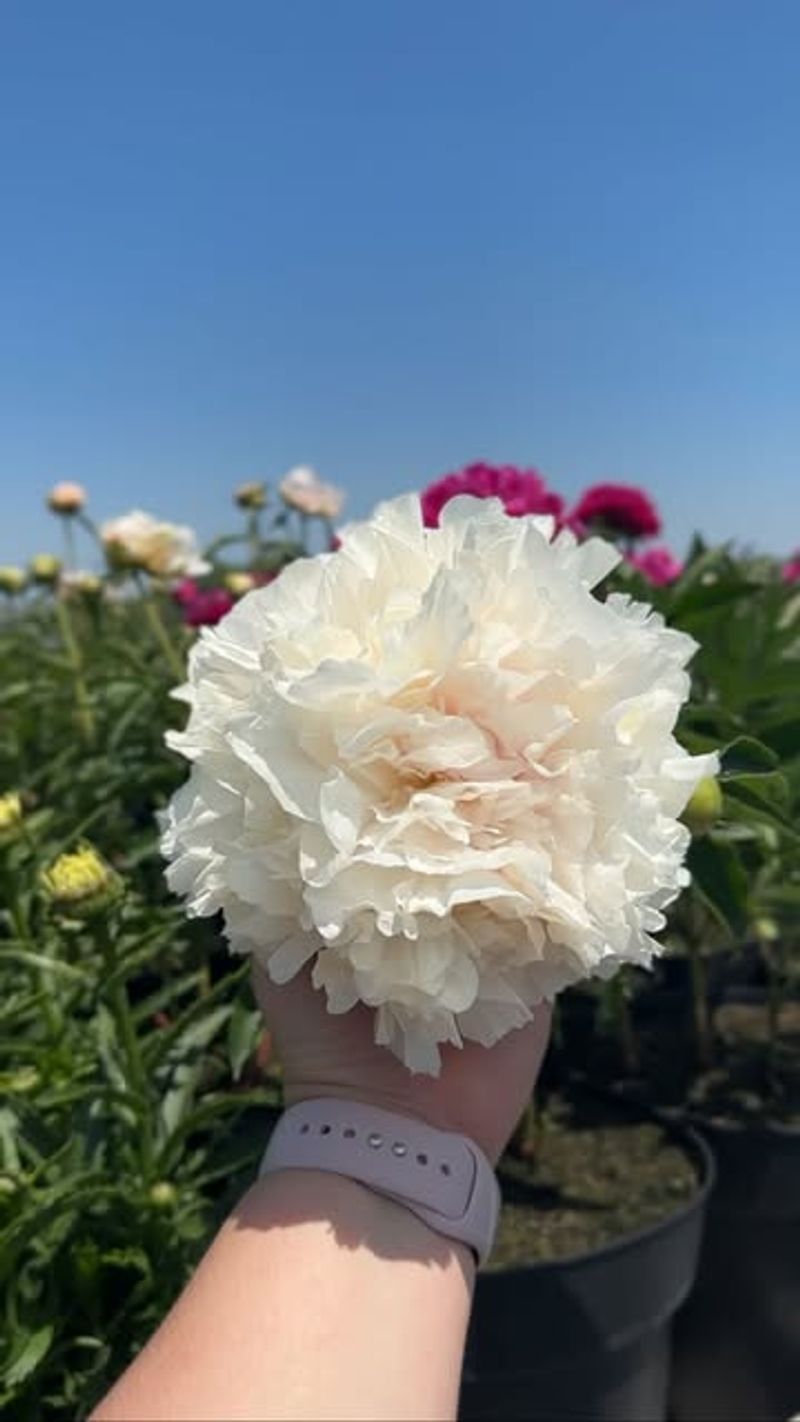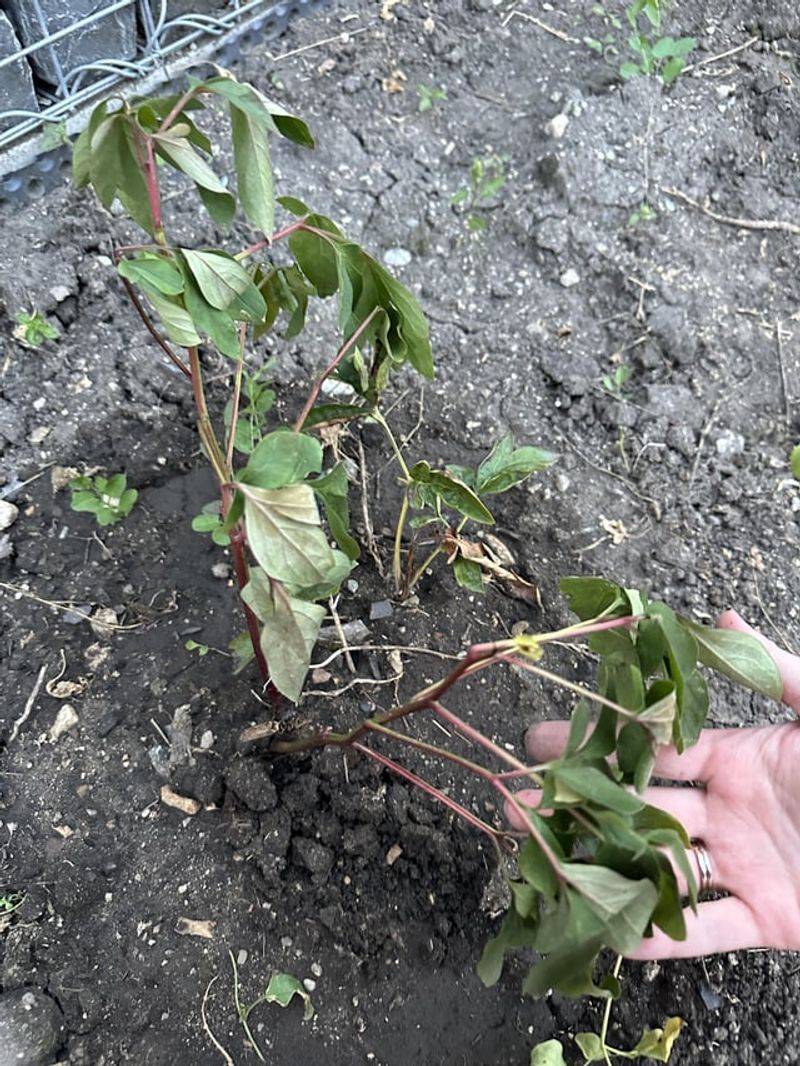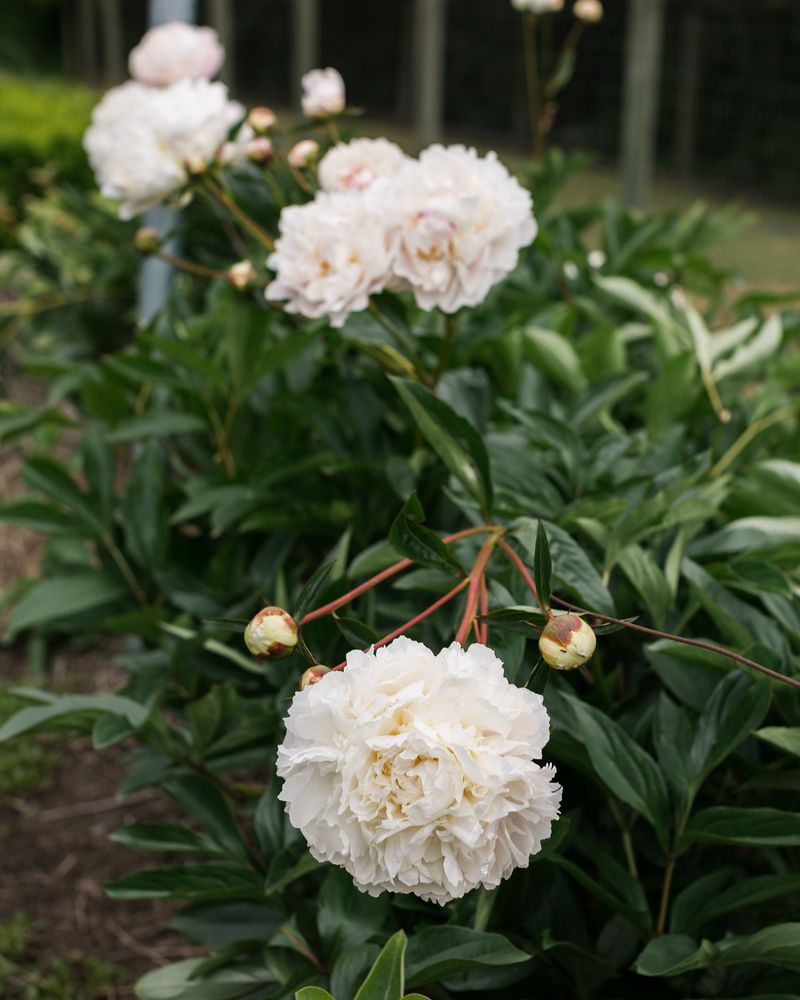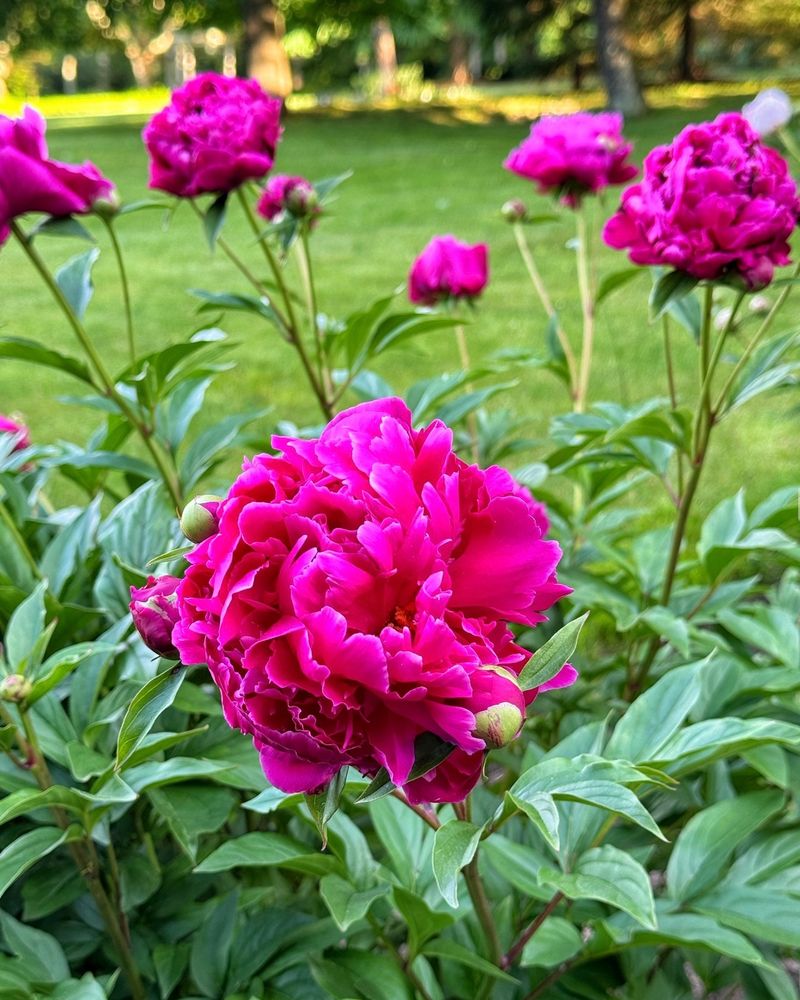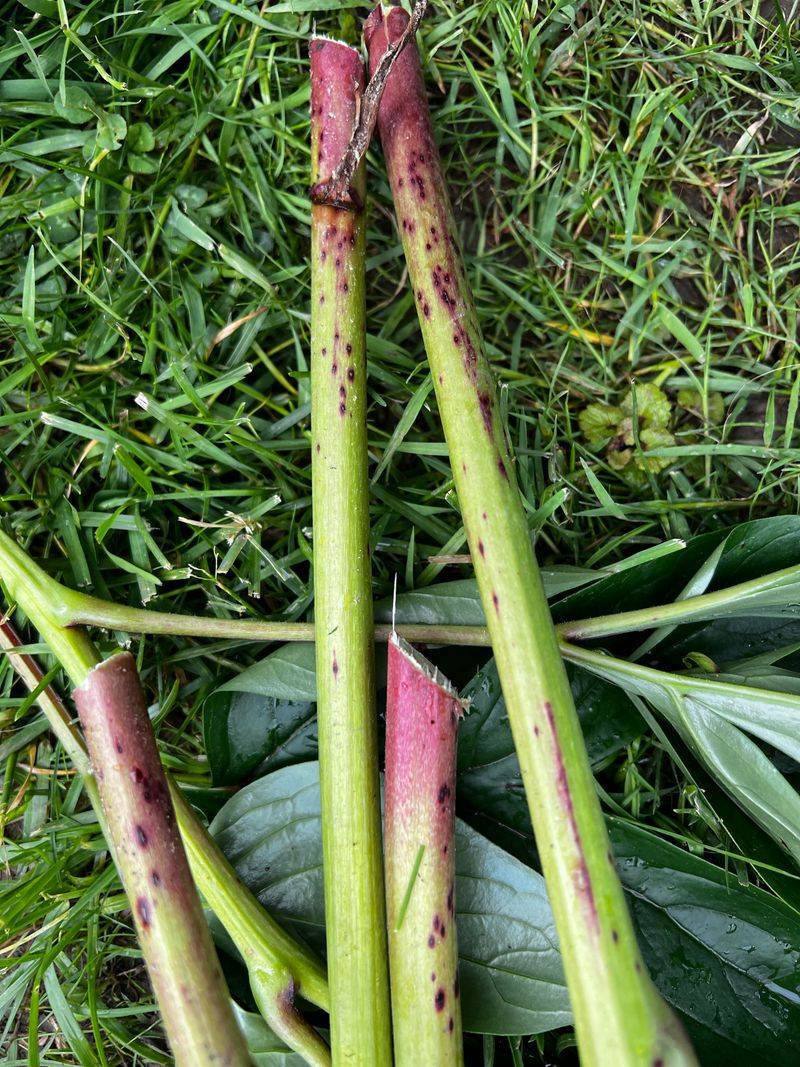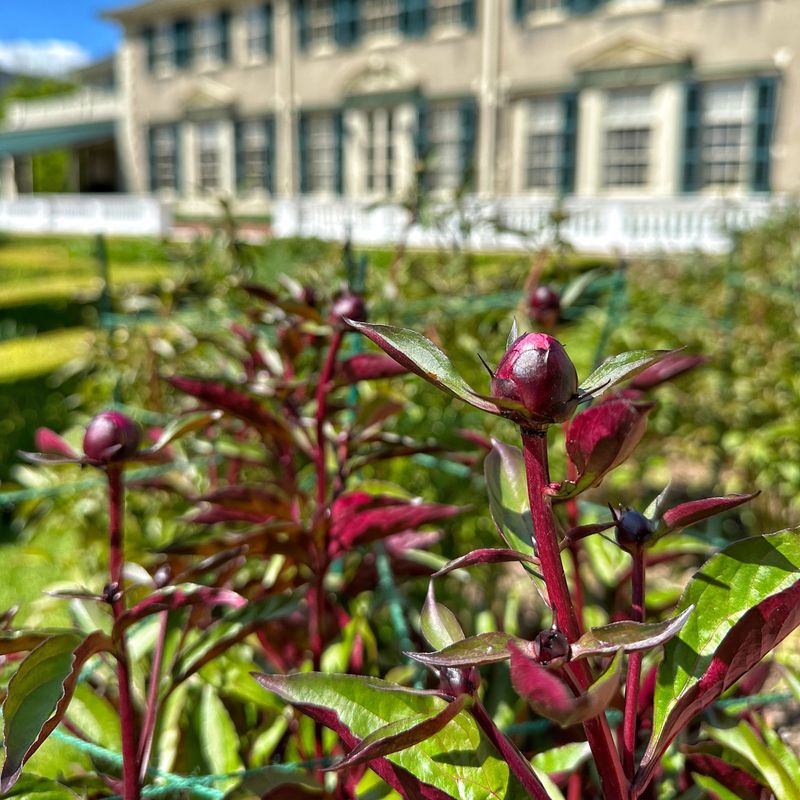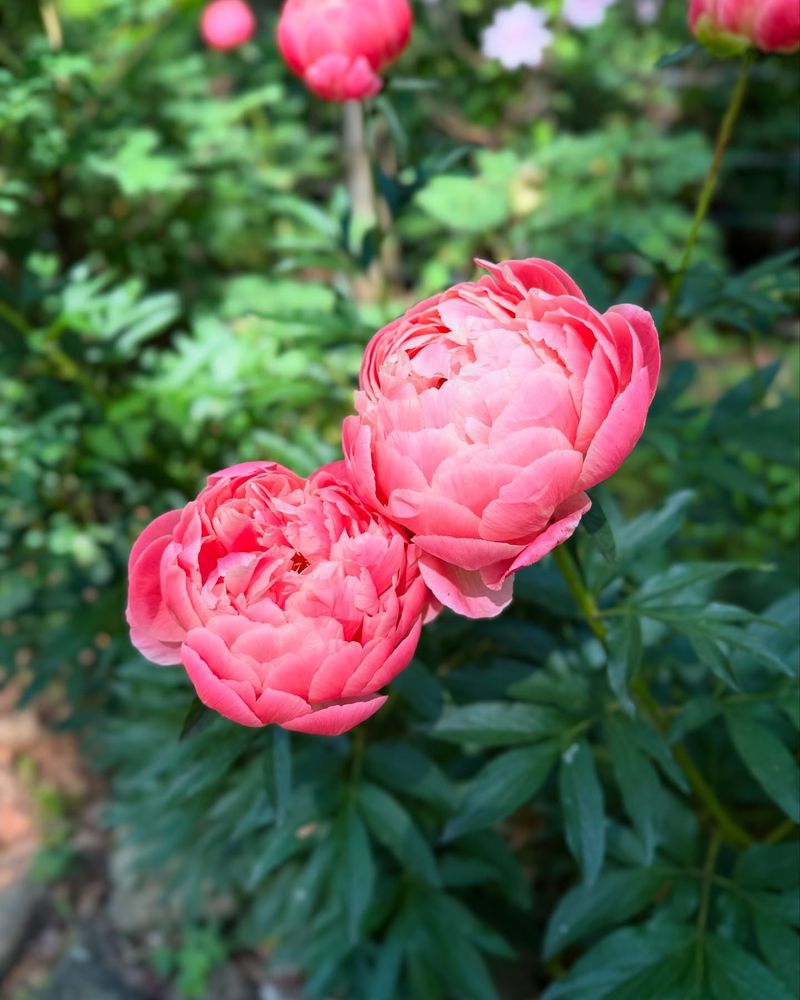Peonies are showstoppers—until they hit the ground with a thud. If you’ve ever watched those gorgeous blooms bend, droop, or flat-out collapse, you’re not alone. I’ve been there, too, wondering what went wrong just as the flowers were hitting their peak.
Turns out, there are more than a few reasons peonies fall apart—literally. From heavy blooms to hidden pests, here are 17 common causes of flopping peonies—and exactly how to fix each one.
1. Oversized Flower Heads
Those massive, dinner-plate sized blooms are simply too heavy for their own stems! Peony varieties with extra-large flowers often can’t support their own weight, especially after rain.
Combat this by installing support rings or cages early in the growing season, before plants reach 12 inches tall. The foliage will grow through and hide the supports while providing the necessary structure.
For established plants with consistently floppy blooms, consider switching to single or semi-double varieties that have smaller, lighter flower heads.
2. Rainstorm Damage
Summer downpours transform gorgeous peonies into sad, drooping messes within minutes. Water collects in those densely packed petals, adding significant weight that stems can’t handle.
When heavy rain is forecast, cover prized peonies with a clear tarp supported by stakes to keep them dry. For already rain-soaked flowers, gently shake excess water from blooms and provide temporary support with bamboo stakes.
Consider planting weather-resistant varieties like ‘Bowl of Beauty’ that shed water more effectively due to their open centers.
3. Planting Too Deep
Buried treasure doesn’t bloom well! Peonies planted too deeply struggle to produce strong stems and often flop over from weakness. The growth eyes (reddish buds) should be just 1-2 inches below soil level.
For existing plants, carefully remove some soil from above the crown in fall or early spring. You’ll know you’ve reached the right depth when you see those pink/red growth buds just below the surface.
Mark your calendar for September when you can safely dig up and replant overly deep peonies at the proper depth.
4. Weak Stems From Poor Nutrition
Starving peonies develop skinny, weak stems unable to support their magnificent blooms. Without proper nutrients, particularly potassium and phosphorus, stems grow spindly and prone to bending.
Apply a balanced, slow-release fertilizer specifically formulated for flowering perennials in early spring. Bone meal worked into the soil around plants provides phosphorus that strengthens stems.
Avoid high-nitrogen fertilizers that promote lush foliage at the expense of strong stems. A soil test can pinpoint specific deficiencies needing correction.
5. Insufficient Sunlight
Sunlight-starved peonies stretch desperately toward light sources, developing leggy, weak stems that collapse under the weight of blooms. These light-seeking stems simply lack the strength to stand upright.
Evaluate your garden throughout the day to identify spots receiving at least 6 hours of direct sunlight. Fall or early spring is ideal for relocating light-deprived plants to sunnier locations.
For peonies in partially shaded spots, choose varieties more tolerant of lower light like ‘Sarah Bernhardt’ or Japanese-type peonies with lighter blooms.
6. Overcrowded Growing Conditions
Peonies jostling for space develop weak, spindly stems as they compete for nutrients, water, and light. Overcrowded plants often lean outward seeking breathing room, creating awkward angles that promote collapse.
Give each peony plant a generous 3-4 foot diameter space. For existing crowded plantings, fall is perfect for dividing and replanting with proper spacing.
While waiting for the ideal division time, selectively prune neighboring plants that encroach on your peonies’ personal space, creating better airflow and reducing competition.
7. Poor Drainage Issues
Waterlogged soil creates weak root systems that can’t properly anchor or nourish peony plants. The resulting feeble stems simply can’t support the weight of magnificent blooms.
Improve drainage by mixing in compost and coarse sand when planting. For established plants in soggy spots, create a slight mound around the base to elevate roots above water-retention zones.
Consider installing drainage tiles for persistently wet areas, or relocate precious peonies to raised beds where excess water can easily escape from root zones.
8. Wind Damage
Spring windstorms can wreak havoc on tall peonies, snapping stems or permanently bending them at awkward angles. Once bent, stems rarely straighten themselves, leaving flowers pointing toward the ground.
Create windbreaks using decorative screens, trellises with climbing plants, or strategic shrub placement to shield peonies from prevailing winds. Garden obelisks or peony rings provide excellent support against unexpected gusts.
For emergency protection during sudden windstorms, place temporary stakes around plants and loosely tie stems with soft garden twine or plant tape.
9. Botrytis Blight Weakening Stems
Gray mold (Botrytis) attacks stems at soil level, creating brown lesions that weaken structural integrity. Infected stems often collapse suddenly under the weight of developing flower buds.
Remove and destroy (don’t compost!) affected stems immediately upon spotting symptoms. Improve air circulation by thinning dense foliage and maintaining proper spacing between plants.
Apply a fungicide labeled for botrytis control early in the growing season, especially during wet weather. Fall cleanup is crucial—remove all peony debris to prevent spores from overwintering in your garden.
10. Improper Staking Techniques
Waiting until peonies are already flopping before adding support often causes more harm than good. Trying to force bent stems upright damages them, creating permanent kinks or even breakage.
Install support systems early in spring when shoots are just 6-10 inches tall. Commercial peony rings or homemade supports using twiggy branches work beautifully when plants grow through them naturally.
For the most natural look, place three bamboo stakes in a triangle around each plant and connect with garden twine, creating an invisible support cage.
11. Top-Heavy Double Varieties
Double peonies with their hundred-plus petals per bloom are magnificent but notoriously prone to flopping. Those extra layers of petals create blooms weighing several ounces each—too heavy for many stems.
Choose sturdier varieties like ‘Kansas’ or ‘Red Charm’ that naturally have stronger stems. For existing top-heavy varieties, dedicated support systems are non-negotiable.
Consider cutting double peonies for gorgeous indoor arrangements before they fully open, allowing you to enjoy their beauty without fighting gravity in the garden.
12. Shallow Root Systems
Newly planted peonies haven’t developed extensive root systems to properly anchor themselves. Without deep anchoring roots, even modest-sized blooms can cause young plants to tip over.
Be patient with new plantings—remove most flower buds for the first two years to allow energy to focus on root development rather than bloom production. This sacrifice pays dividends in future years.
Mulch around plants with 2-3 inches of organic material, keeping it away from stems, to encourage deeper root growth and provide stability during establishment.
13. Sudden Temperature Fluctuations
Rapid temperature swings cause stems to grow irregularly, creating weak points prone to bending. Spring heat waves followed by cold snaps are particularly problematic, causing cellular damage within stems.
Apply 2-3 inches of mulch around plants to moderate soil temperature fluctuations. For prized specimens, consider temporary shade cloth during unexpected heat waves to reduce stress.
Water consistently during temperature extremes, as hydrated plants better withstand stress. Morning watering is ideal, allowing foliage to dry before cooler evening temperatures arrive.
14. Ants Weakening Stem Structure
Contrary to popular belief, ants rarely cause peony collapse directly. However, large ant colonies nesting at the base of plants can undermine soil structure and occasionally damage young stems.
Don’t panic about normal ant activity on peony buds—they’re just collecting nectar and actually help buds open. For problematic infestations, try cinnamon powder sprinkled around plant bases as a natural deterrent.
Avoid chemical ant killers near peonies, as these may harm beneficial insects that pollinate your flowers. A simple water spray can temporarily discourage excessive ant populations.
15. Excessive Nitrogen Fertilizer
Lawn fertilizers high in nitrogen create lush, soft growth that looks impressive but lacks structural integrity. These overfed peonies produce extra-large, floppy stems that can’t support themselves.
Switch to bloom-boosting fertilizers with higher phosphorus content (the middle number on fertilizer packages). Apply in early spring as shoots emerge for best results.
Create a protective ring around peonies when fertilizing nearby lawns to prevent nitrogen runoff from reaching your flowers. Coffee grounds and banana peels make excellent low-nitrogen organic alternatives.
16. Delayed Division of Mature Plants
Aging peony clumps become congested at the center, with newer growth forced to the outer edges where stems grow at awkward angles. These peripheral stems naturally lean outward, making them prone to collapse.
Divide peonies that have been growing in the same spot for 10+ years. Fall is ideal—carefully dig up the entire root ball, wash away soil, and use a sharp knife to create divisions with 3-5 eyes each.
Replant divisions at the proper depth with eyes just 1-2 inches below soil level. New plantings will reward you with stronger, more upright growth.
17. Soil Erosion Around Roots
Heavy rains or improper watering techniques can wash away soil around peony roots, destabilizing the entire plant. Once exposed, roots provide less anchoring support, allowing stems to lean or topple.
Add fresh garden soil or compost around the base of plants where erosion has occurred. Create a gentle basin around each plant to direct water toward roots rather than allowing runoff.
Apply 2-3 inches of mulch in a donut shape around plants, keeping it away from stems, to prevent future erosion and stabilize soil temperature and moisture.

